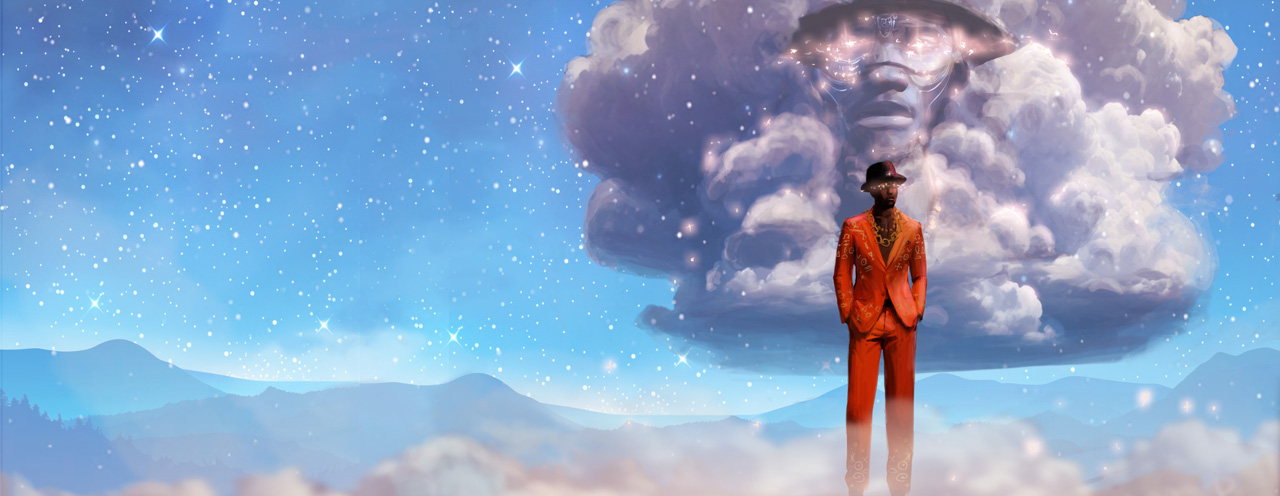If reality had a shape, it would be water—fluid, elusive, capable of slipping through a child’s curious fingers, yet powerful enough to carve out entire landscapes. If you had to define this anthology in a single word, it is about reality. Not as a fixed or immutable truth but as something malleable, a construct shaped by memory, perception, and the stories we choose to believe. Within these pages, reality stretches beyond its perceived boundaries, splinters under pressure, and reforms itself into new, haunting shapes.
These stories emerge from a continent where history’s scars still burn and alternate futures feel tantalisingly close. They were written against a backdrop of crises: genocides unfolding just beyond artificial borders; social media feeds tattooed by increasingly horrific images—ruined cities, ruined lives, ruined people and their cries for help lost in the cacophony of capitalism’s interruptions. Ad after ad for tech, games, and movies that don’t look or do anything different from their previous iteration, followed by videos of immense suffering from Congo, Sudan, and Palestine. Who can honestly process all this suffering? How many more shiny things will be shoved down our throats until we can no longer dissociate from this grotesquerie? Even those who shield themselves with the belief that “those things happening over there would never happen here” need to open their eyes. Everything is happening, everywhere, all at once, to everyone.
Colonial powers (neo- and old), unsatisfied with their plunder and ruin of Africa, remain embedded in the continent, hiding behind masks of “global partnerships”, “aid”, and “economic development”, while the reality underneath remains one of extraction, exploitation, and control.
The stories we are told—and those we tell ourselves—shape these realities, rendering systemic violence invisible or, worse, acceptable. Climate change denialism, genocide denialism, and the resurgence of right-wing extremism and neo-Nazi ideologies, all build their foundations on fractured narratives. These conspiracy theories metastasise into alternate realities that twist the past, distort the present, and radicalise the future, breeding violence that disproportionately targets the marginalised. Ultimately, the most vulnerable bear the brunt of our delusions, their suffering erased or rendered invisible in a reality disfigured by silence and complicity.
This anthology gathers stories that refuse those silences and confront the fractured truth head-on. They ask: Who gets to define what is real? What happens when the narrative shatters? When do we rewrite the stories and reshape the realities forced upon us?
In Shingai Kagunda’s “The Language We Have Learned to Carry in Our Skin”, a story where many things happen behind closed doors, a character probes the significance of seeing and understanding the world as it is. Do not close your eyes for anyone, not even God. Because a God that cares will want you to see what is happening. Shingai shows us the battle between colonial narratives and African traditions and how one of the scars left behind is a sense of limited agency in shaping one’s temporal destiny. We see how language, through both its use and omissions, can be used to distort lived realities, the contours shaped and reshaped amid the dance of punctuation:
Every brutal headline where I’ve inserted a comma, deleted a colon, switched out a question mark for a period when it should have remained a question. But it is not our job to question; it is our job to inform and write objectively what is, without asking why it is the way it is.
Gabrielle Emem Harry, on the other hand, demonstrates that language can serve as a bridge to translate incomprehensible reality in “Something Cruel.” In the World Visible, they are called demons, evil spirits, curses…whatever word a tongue seeking to translate suffering into sense can grasp first.
For some characters, the weight of change fractures their reality. In Matseliso Motsoane’s “Baby Potion”, circumstances force a woman to reexamine the seemingly commonplace details of her life, uncovering truths that force her to reconcile with a reality she was never meant to understand. In Andrew Dakalira’s “Ash Baby,” a man’s unassuming rhythm of an ordinary life is shattered by an encounter with the extraordinary. What begins as an innocuous day spirals into a collision with forces he cannot comprehend.
This theme that reality lies in the telling echoes in Yvette Lisa Ndlovu’s “Dinosaurs Once Lived Here”. Anansi’s cousin, the spirit of drunkenness, who once lived on the earth as a human, tells the best stories at parties. But he has a hard time minding his cups, forgetting details and changing names and the order of events. What he doesn’t remember, he invents. The scribe spirit writes everything down as told. The will of the storyteller blurs the line between fact and fiction.
Reality, however, is not merely in what we are told or what we see; it is also shaped by what we remember. Azara Tswanya and Kevin Rigathi’s stories seem to exist in a shared universe, as shown by how they converse about the connection between memory and reality. Both stories force us to grapple with how malleable identity may be, the potential for technological interference, and how these advancements show up in interpersonal bonds. In an intimate moment, Tswanya’s “The Market of Memories” shows us that what we remember—or fail to remember—can alter our reality, who we are, and our relationships.
…” I want to shave it off,” he said irritably, gesturing wildly at his hair. “It’s disturbing me.”
You had never known he kept it around for your pleasure.
Rigathi’s “If Memory Serves” explores a darker side of memory’s void on relationships. Do you know how easy it is for a gaslighter to manipulate someone who doesn’t remember?” a character asks. “He knows more about the relationship than she does; he knows all of her weak points, and she knows none of his tactics. The imbalance of knowledge creates a dynamic where reality is not simply forgotten but reconstructed by someone else.
And, of course, speculative fiction revels in pushing the boundaries of reality beyond our own. We see this in Victor Forna’s “Mr Original Swag,” where an offer to escape the ordinary comes with strings attached. Say yes to Mr. Original Swag, and he will hold your hand, fit his rust-orange fedora on his head, and dance you out of the world. Take you to his arena, outside space and time. In Ephraim Orji’s “The Sirangoi Fey Market”, readers will be drawn into a world of both wonder and dread as a woman navigates a mystical, otherworldly market, her motive rooted in a profoundly worldly pain.
In Lucille Sambo’s “Scales and Arabesques”, the characters begin to perceive the unseen realities that coexist within and beyond the ordinary.
“A war with who?”
“It has already begun. Just look around.”
“I don’t see any buildings falling or hear children crying.”
“And that’s your mistake.”
Similarly, in Alex Tamei’s “A Song of Ruin”, a deeper understanding of our world reveals something more beneath the surface. In learning to listen to the melodies of nature, these individuals developed the ability to resonate with the rhythms of reality itself.
Albert Nkereuwem’s “Commensalism, or the Labyrinth’s Vessels” shows how the perception of reality extends beyond the human realm as an intelligent slime seeks answers.
Nietzche’s concept of eternal recurrence finds resonance in Khaya Maseko’s “Acceptance,” where we dive into the very fabric of reality, collapse any distinction between the past and the future, and peel back the layers literally and metaphorically. How alive are we, I ask you? I have asked. The pulse that beats in your ears; is it for a nation, a tribe, a family, a self? How invested are we in these extensions? I want to know who owns us. Maybe it’s Time. Time owns us. Time is space. Matter is energy. This is existence. But how many existences are there?
In Tonny Ogwa’s “The Clans,” we see what happens when competing realities of separate cultures clash. The clans’ bewilderment as they grapple with the alien concepts of Christianity provides a striking and humorous moment: It was all ridiculous. This was one of the few things the clans could agree upon. Going to heaven to forever sing about a virgin woman who gave birth over two thousand years ago? Who would want to go to such a place anyway?
Reality is also defined in relation to and in contrast with other experiences. In Rutendo Chidzodzo’s “I’m Home”, the distance that can lie between expectations and reality is mapped out. They have been waiting. They don’t know you won’t return the same. They don’t know you won’t remember your name. Meanwhile, in Peter Nena’s “Why Donkeys Have 44 Teeth,” the space between nightmares and reality shrinks, leaving characters in terror as the two worlds converge.
Through speculative, fantastical, and surreal lenses, the writers in this anthology explore the boundaries of reality—how it bends, how it breaks, and what it can become. They dream fiercely, even amidst catastrophe, offering a vision of reality that is not static but alive, dangerous, and filled with possibility.

Olivia Kidula
Olivia Kidula is the co-founder and editor-in-chief of Will This Be A Problem? Kenya’s first SFF literary magazine. She is also the publisher and editorial director of Shilitza Publishing Group, an independent press based in Nairobi, Kenya. Her short story, “Mummy Dearest ", appeared in Digital Bedbugs: 2019 Anthology of the Nairobi Fiction Workshop. With a decade of experience in print media and speculative fiction publishing, her proficiency in fiction and nonfiction is evidenced by a portfolio that includes novellas, short stories, and magazine features.

